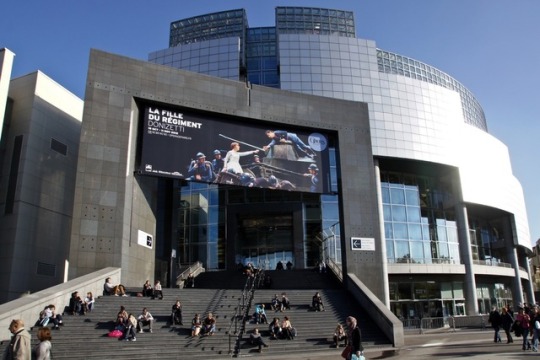#Anna Alarcón
Explore tagged Tumblr posts
Text
Mon Kornkamon from Gap The Series

Khun Sam from Gap The Series

Some of my favourite queer ladies of all time (Part 2):
Amanita Caplan from Sense8

Carlota Rodríguez de Senillosa from Cable Girls

Alice Pieszecki from The L Word

Fatou Jallow from DRUCK

Vera from Sjukt Oklar

Aurora Alarcón from Seis Hermanas

Nicky Nichols from Orange Is The New Black

Elena Álvarez from One Day At A Time

#gap the series#mon kornkamon#amanita caplan#sense 8#cable girls#las chicas del cable#alice pieszecki#the l word#fatou jallow#druck#Sjukt Oklar#vera#aurora Alarcón#seis hermanas#orange is the new black#oitnb#nicky nichols#elena Álvarez#one day at a time#freema agyeman#leisha hailey#ana fernández#madeleine martin#sira anna faal#natasha lyonne#luz valdenebro#isabella gomez#khun sam#freen sarocha#becky armstrong
56 notes
·
View notes
Text
Sly5thAve - Liberation - leading a whole orchestra on his new album
‘Liberation’ is the third solo LP from composer, arranger, producer, and multi-instrumentalist Sly5thAve. Layered with orchestral arrangements, jazz improvisation and Hip-Hop production, ‘Liberation’ is an accomplished record of courage, musical conviction, and growth. Known for his sophisticated compositions, Sylvester Uzoma Onyejiaka II AKA Sly5thAve’s first experiences with large scale arranging were with the Club Casa Chamber Orchestra and recording instrumental covers of popular modern songs. Notably, his orchestral tribute to Dr. Dre, ‘The Invisible Man,’ garnered widespread praise and attention, even earning the admiration of Dr. Dre himself. Through these recordings Sly5thAve felt he had found a way to make people connect with orchestral music; “I’ve long felt orchestras around the world are inaccessible to most people – whether it be the programming or the cost, or the location”. The LP is Sly5thAve’s first full album of original orchestral arrangements and features the musicianship of Sly5thAve’s collaborators and Ghost Note bandmates - headed by Snarky Puppy's multi-Grammy–winning percussion duo Robert “Sput” Searight and Nate Werth, alongside previous collaborator Roberto Verástegui. MUSICIANS Sly5thAve – Bari Sax, Tenor Sax, Flute, Bass Clarinet, Aux Keys, Synth Bass, Drum Programming Roberto Verástegui – Keys (A1, B1, B3, C1, C3, C4, D2, D3) Todd M. Simon – Trumpets (A1, B1, B2, C1, C4, D1) Robert “Sput” Searight – Drums (A1, B1, B2, C1, C4, D1) Peter Knudsen – Guitar (A1, B1, B2, B3, C1, C3, C4, D1, D2, D3) Nate Werth – Percussion (A1, B1, B2, C1, C4, D1) Jelani Brooks – Tenor Sax (A1) Michael Campagna – Trumpet (A1, B1, B2, C1, D1) Marío Cortés García – Contrabass (A1, B1, B2, C1, C4, D1) Malik Taylor – French Horn (A1, B1, B2, C1, C4, D1) Lemar Guillary – Trombone (A1, B1, B2, C1, C4, D1) Jonathan Mones – Flutes & Sax (B1, B2, D1) Jay Jennings – Trumpet & Flugelhorn (A1, B2, B3, C1, C4, D2) Ibanda Ruhimbika – Tuba (A1, B1, B2, C1, C4, D1) MonoNeon – Bass (B3, C3, D2, D3) DominiqueXavier – Keys (A1, B1, B2, C1, C4, D1) Domenica Fossati – Flute & Piccolo (A1, B1, B2, C1, D1) Dave Richards – Trumpet (B2, C4, D1) Daniel Wytanis – Trombone (B2, C4, D1) Ben Burget – Flutes, Clarinet & Alto Sax (A1, B1, B2, C1, C4, D1) Antoine Katz – Bass (A1, B1, B2, C1, C4, D1) Alex Wasily – Trombone (A1, B1, B2, C1, C4, D1) MacKenzie – Vocals (C3) Kyle Rapps – Vocals (B3) STRINGS (A1, B1, B2, B3, C1, C4, D1, D2) Salomón Guerrero Alarcón – Cello Israel Torress Araiza – Violin Carols Roberto Gándara García – Violin Anna Arnal Ferrer - Viola
4 notes
·
View notes
Text

performingborders e-Journal #2 Rallying The Commons
Curator, Producer
Rallying the Commons is here – we couldn’t be more excited to share our second e-journal!
READ the e-journal HERE
The performingborders e-journal is a space to reflect on borders, live art, community, and resistance. Centering embodied knowledge and artists’ imagination as a space of knowledge production, the e-journal is a site to nourish and connect thinking and working practices. The theme of this year’s journal: Rallying the Commons stems from the process of rallying together, of commoning and communing, for the creation of something better and the maintenance of other ways of being. It is a movement away from disembodied discourse towards actions and gestures that let us consider what we can do when we harness our resources, time, bodies, and care, to collectivize them.
In the e-journal, you’ll find contributions from artists and activists working across cultural and political spaces. We are excited to share sonic listening rituals by Ximena Alarcón-Díaz and Sheila Ghelani’s tender reflections on care in the art sector. Helena Walsh reflects on the role of feminist organising and art activist groups within an Irish context. Harun Morrison shares his collaboration with horticulturist Antonia Couling and their work The Anchor, The Drum, The Ship.Elif Sarican and Dilar Dirik write on hevaltî- revolutionary friendship reflecting�� on the Kurdish Women’s Movement. Lara Khaldi from The Question of Funding shares with us community-centered funding models and the use of Dayra within their project in Palestine. And we close with a Budget Commission by Jack Ky Tan who has been reflecting with us on budgets, value systems and thinking beyond numbers. We hope that within these words, sounds, images, and gestures you find echoes of resistance that allow us to continue the necessary work of imagining other worlds.
performingborders e-Journal #2 Rallying The Commons
Curated and Edited by Xavier de Sousa, Anahí Saravia Herrera and Alessandra Cianetti. Designed by Rodrigo Nava Ramírez Social Media and Design support: Anna Corfa
Thank you to our friends at the Necessity Fund and to Arts Council England for supporting this work.
0 notes
Text
Watergate, Contragate, and Foreign Campaign Contributions
The following is excerpted from Contragate: Reagan, Foreign Money, and the Contra Deal by Peter Dale Scott Why would the Reagan administration, whose ideology is supposed to be one of patriotism mellowed by pragmatism, have such a huge investment in a cause that is so controversial here as well as in Nicaragua? The Reagan response is to point to the murder and torture committed by left-wing terrorists, and to the Caribbean Basin’s proximity and strategic importance. But many who give credit to both arguments have replied that the contras, by their excesses and sheer incompetence, are weakening rather than strengthening support for the U.S. in the area.
A different question is whether the funds from Guatemala, P-2, Somoza, and other WACL sources, helped generate the private “verbal agreements” that Sandoval Alarcón referred to. The recycling of profits and AID funds from foreign countries back into American elections is perhaps one of the largest and least discussed scandals of the last three decades. WACL countries in particular, whose survival and affluence so often depend on U.S. support, have repeatedly been at the center of such rumors.
This would seem to be an appropriate topic for any Senate investigation into any illegal contra activities and cover-ups. But Congress in the past has proved most reluctant to pursue the question of illegal foreign funding in electoral campaigns. Renata Adler has described how the congressional inquiry into Watergate faded at the point when traces were uncovered of large funds pumped into the Nixon campaign from the Far East (Adler, 1976: 76–94). Nor did Republicans pursue similar allegations that dogged the campaign of even that cleanest of candidates, Senator George McGovern.41 Silence on such matters serves the interests of both parties.
Some of the points made by Renata Adler, a member of the staff investigating Nixon for the House impeachment inquiry, bear closely on the Reagan-WACL connection. She referred to theories “that Nixon was driven from office by a conspiracy within government itself—more specifically, within the CIA.” And she drew attention to the inability of the CIA “to give any satisfactory account” of its involvement in the Southeast Asian narcotics traffic, where its airline Air America collaborated with members of Taiwan’s WACL chapter in supplying the opium growers of the Golden Triangle (Adler, 1976: 77, 90; Scott, 1972: 204, 206).
Adler did not refer specifically to the very efficient sabotaging of the Nixon White House by Howard Hunt, nor to the fact that Hunt’s White House services went into their disastrous high gear after the June 1971 departure of Kissinger for Beijing.42 But she specifically named Anna Chan Chennault, perhaps Taiwan’s top lobbyist in Washington, as someone who had raised campaign funds for Nixon from the Philippines, Hong Kong, Japan, and South Korea (Adler, 1976: 92–93). Citing evidence too complex to review here, she concluded that:
the South Vietnamese administration, not wanting peace to be at hand just yet, used some of the enormous amounts of money we were pouring in there to bribe our administration to stay in (Ibid.: 91).
The bribes were in the form of illicit foreign campaign contributions—possibly in 1968, and more clearly in 1972. Though she refers to him only as a Nixon “White House official,” Adler refers to two distinct sub-plots where in each case a principal suspect was Richard Allen, the man who in 1980 became Reagan’s principal foreign-policy adviser (Ibid.: 91; 94).
In the 1968 case,
Mrs. Chennault’s activities had aroused the suspicions of the Washington intelligence community, and a plethora of agencies seemed to be watching her closely. According to published reports, the FBI tapped her telephone and put her under physical surveillance; the CIA tapped the phones at the South Vietnamese embassy and conducted a covert investigation of Richard Allen. Then, a few days before the election, the National Security Agency... intercepted a cable from the Vietnamese embassy to Saigon urging delay in South Vietnam’s participation in the Paris peace talks until after the [U.S.] elections. Indeed, on November 1, her efforts seemed to have paid off when President Nguyen Van Thieu reneged on his promise to Lyndon Johnson, [and announced he would not take part in the exploratory Paris talks] (Lukas, 1976: 283).
There are enough similarities between Allen’s career and Deaver’s (both men having gone on from the post of White House official to become the registered foreign lobbyist of Asian countries) to suggest that Adler’s hypothesis for the origins of Watergate (bribery by illicit foreign campaign contributions, and the potential for blackmail thus created) might explain the workings of the Contragate mystery as well. In 1980, as in 1968, the WACL coalition apparently decided to conspire against an American Democratic incumbent, the main difference being that in 1980 the role both of illicit foreign funds and of American intelligence veterans appears to have been more overt.
Congress should certainly investigate this possibility. But there is perhaps a better chance of a searching and objective inquiry if a truly independent special prosecutor is appointed to investigate the affairs of Mike Deaver. Deaver is already under scrutiny for his lobbying activities in South Korea. Some of these involve the U.S. Ambassador in Seoul, Richard Walker, a WACL participant since as far back as 1970.
Deaver’s connections with South Korea go back at least to February 1981, when he “ushered President Chun Doo Hwan of South Korea into the Oval Office to meet Reagan” (San Francisco Chronicle, August 11, 1981: 6). Chun was in fact the first of the WACL dictators, shunned by Carter, to be received into the Oval Office. In a sense his visit, like Sandoval’s, was a trial balloon for Reagan’s new policy of tilting towards WACL and away from Carter’s support of “Human Rights.”43
Chun’s visit to Reagan is said to have followed a period of intense involvement in Latin American WACL intrigue by CAUSA, the political arm of the South Korean Unification Church. The links between Moon’s church and the South Korean Central Intelligence Agency are so overt that a decade ago they provoked a U.S. Senate investigation.44 CAUSA officials are reported to have offered $4 million for the García Meza Bolivian coup of July 17, 1980; and one of them is said to have worked directly with Klaus Barbie in organizing the coup.45 When Congress ordered a cutoff of military aid to the contras in 1984, CAUSA worked with Refugee Relief International, a creation of Singlaub and of WACL, to ferry nonmilitary supplies to the same contra camps. An informed observer said that “the ‘big three’ countries that were expected to aid the contras [militarily] were Israel, South Korea, and Taiwan” (Anderson, 1986: 129; Washington Times, October 8, 1985: 5A). Robert Owen, said to have served with Singlaub as a cut-out contact between the National Security Council and the contras, is a former registered lobbyist for South Korea (Miami Herald, June 8, 1986: 26A; NBC “Nightly News,” June 13, 1986).
It is unlikely that Deaver’s lobbying activities were more than a small part of the apparatus securing the Reagan-WACL connection. The full story, if it could be told, would probably lead to grey intelligence-political alliances that were already in place when Deaver was a young boy. Undoubtedly Cline and Singlaub, not to mention Reagan himself, would know more about such matters.
But unlike Reagan, unlike Cline and Singlaub, Deaver’s activities have suggested to federal investigators that he may have violated U.S. statutes. Thus he can now be made to talk about how these connections were forged. Under oath.
40. Delle Chiaie, the more seasoned and sophisticated of the two terrorists, somehow eluded capture. He “was later to claim that, through infiltration of both the American and Italian intelligence services, he knew in advance of the plans” to seize him (Linklater, 1984: 300). 41. The firm of Miles Rubin, McGovern’s financial chairman in the 1972 campaign, has been revealed as the depository of secret funds from Suharto and his financial partner in one of the largest recent scandals in Indonesia (May, 1978: 225).
42. Kissinger left Washington for Beijing in late June 1971; Hunt was hired as a White House consultant on July 6.
43. To facilitate the Chun visit, and the resumption of normalized relations with South Korea which followed, the Reagan administration delayed publication of the State Department’s statutorily required report on international human rights, which noted a “deterioration” of human rights in South Korea in 1980 (New York Times, February 2, 1980: 8; February 10, 1980: 10). On his return to Seoul, Chun announced harsh new labor laws banning strikes (New York Times, March 1, 1980: IV, 4). The United States followed with an announcement it would sell $900 million in arms to South Korea, including 36 F–16 fighters (New York Times, March 27, 1980: 9).
44. See Anderson (1986: 66–70). The church was also promoted with assistance from Sasakawa Ryoichi and Kodama Yoshio, two of the CIA’s most notorious contacts in Japan.
45. See Anderson (1986: 302) quoting Le Monde Diplomatique (February 1985).
#Peter Dale Scott#Chun Doo Hwan#reagan#wacl#right-wing politics#ray cline#cia#united states of america#world anti-communist league#causa#Mike Deaver#politics#south korea#republic of korea#korean politics#anti-communism
0 notes
Text
How Far Would You Go For Love? Watch The Offering UK Trailer
How Far Would You Go For Love? Watch The Offering UK Trailer
How far would you go in love? In the UK Trailer for Spanish psychological thriller The Offering reuniting with an old flame sees ghost from the past bring severe consequences for all. This thriller comes from award winning filmmaker Ventura Durall. Whose The Two Lives of Andrés Rabadán (2009) pushed Catalonian cinema onto the international stage. His latest film is an erotic, intense and…

View On WordPress
#Àlex Brendemühl#Anna Alarcón#Sovereign Film Distribution#spain#The Offering#Ventura Durall#Verónica Echegui
0 notes
Text
"La canción española no deja de crecer en los Estados Unidos"

[La mezzosoprano americana Anna Tonna / REBECA SARAY]
La mezzo neoyorquina Anna Tonna registra un álbum de canciones españolas con Manuel de Falla y María Lejárraga de ejes principales
Cuando se hizo esta entrevista, en plena canícula de julio, Anna Tonna preparaba para el Festival Little Opera de Zamora un programa con un doble rescate, La Araucana, una ópera de cámara de 1791 original del salmantino José Lidón, y La graciosa y el compositor, una tonadilla escénica de 1762 de Luis Misón. Paralelamente, la mezzo estaba presentando un álbum en torno a la relación entre Manuel de Falla y María Lejárraga.
–Siendo neoyorquina, ¿de dónde le viene este interés por la música española?
–La mayoría de los neoyorquinos somos de muchos sitios; yo soy de madre dominicana y padre maltés. Y como hispanohablante, me interesó cantar en español desde siempre. Desde que empecé estudiaba canciones españolas y latinoamericanas. En el curso 2007-08 gané la Beca Fullbright y me vine a España para estudiar canción española del temprano siglo XX. A partir de ahí empecé a especializarme de manera más intelectual y académica. Hice algunos trabajos para la Fundación Juan March y presenté artículos académicos y ponencias sobre el tema. Poco a poco he ido siendo más conocida como especialista de este repertorio español: tardío siglo XIX y temprano siglo XX.
–Y es en ese contexto que nace este disco...
–Exactamente. La idea es antigua, del año 2010 o 2011. Yo acababa de grabar unas canciones de Julio Gómez. Y empecé a interesarme por María Lejárraga a través de la musicóloga María Luz González, una gran estudiosa, que había escrito una biografía sobre Lejárraga en la que trataba en profundidad sus relaciones con los músicos con los que trabajó. Hay un capítulo en concreto dedicado a su amistad con Falla, y dentro de ese capítulo editó unos poemas bajo el título de Pascua florida. Lejárraga y Falla hicieron un tour por el sur de España mientras el compositor trabajaba sobre El amor brujo. Iban buscando una cierta autenticidad y pusieron su foco principalmente en la Alhambra. Estuvieron juntos unos diez días. Durante ese viaje ella escribió esos poemas cuyos originales, a lápiz, custodia hoy el Archivo Manuel de Falla. Mariluz editó esos poemas. Y tratando entonces con ella se nos ocurrió encargarle a algún compositor amigo que les pusiera música.

–Y el escogido fue Miquel Ortega...
–Exacto. Pensamos que era el músico ideal, porque Miquel se mete en la piel de las palabras. Ha escrito muchas canciones y mostrado un enorme interés por la poesía y la cultura españolas de la época. Era la mejor opción. Y lo demostró, pues nos ha dejado una música que es casi una continuación de la de maestros como Turina o Falla. Es lógicamente música más moderna, pero se trata de una transición muy natural musical y estéticamente. Sus canciones captan el aroma de este temprano siglo XX español, en el que estaba muy en boga el tema del alhambrismo: Julio Gómez o el maestro Alonso habían propuesto el tema alhambrista como parte de esa exploración nacionalista.
–Aparte de las dos canciones de Falla sobre poemas de Lejárraga, que son bien conocidas, incluye también una canción de Falla sobre Téophile Gautier mucho menos difundida.
–Es un ciclo de tres canciones escritas en París y dedicadas a la mujer de Claude Debussy. Las dos primeras son totalmente francesas, pero esta tercera es españolista, pues se trata de unas seguidillas.
–Y completa con Turina y con dos mujeres que cada vez se programan más, María Rodrigo y Matilde Salvador.
–La elección de Turina era normal, fue amigo de Falla y de Lejárraga, y escribió muchas piezas sobre poemas suyos. Aunque no quería hacer sólo un disco con textos de María y por eso escogí este Corazón de mujer, que tiene texto de otra mujer, Cristina de Arteaga. Quería seguir esta segunda línea con obras en las que estuvieran involucradas mujeres, y por eso las canciones de María Rodrigo, prácticamente la única compositora que se cita dentro de la generación de los maestros, y estas canciones sí son sobre textos de Lejárraga. Fueron amigas y compañeras en el movimiento feminista español, así que fue muy natural meter esas canciones en el disco. Lo de Matilde Salvador es otra cosa: ella usa en este ciclo poemas de la poeta uruguaya Juana de Ibarbourou, y son piezas que tienen un carácter mediterráneo, muy modal, muy en la línea de Falla, me servían para dar un poco de variedad pero dentro del mismo contexto y la estética del disco.
–¿Ha podido hacer ya este programa en concierto?
–El ciclo de Miquel Ortega lo estrené en el National Opera Center de Nueva York en 2017, pero este programa tal cual lo hice también el año pasado en la Semana Lírica de Logroño y en un par de sitios en Cataluña.
–¿Qué recepción crítica y de público tuvo?
–Hubo muchos que decían que todo olía un poco a Lorca, y es cierto. Por ejemplo las canciones de Rodrigo son como coplas y Miquel Ortega está muy compenetrado con ese mundo.

[Falla, Martínez Sierra y Lejárraga / ARCHIVO MANUEL DE FALLA]
–¿Cómo ve ahora mismo este repertorio? ¿Se hace lo suficiente, se programa?
–Lo veo muy bien. Hace diez años había menos cantantes españoles cultivándolo a un alto nivel. Eso ha cambiado. La March es uno de los impulsores más importantes del país y su trabajo en este período de la cultura española ha generado mucha actividad, tanto en disco como en conciertos. Así de memoria, en los últimos años recuerdo a Sofía Esparza, que ha sacado un disco sobre Arrieta; Mar Morán con Aurelio Viribay uno sobre Leoz; Pablo García López, un tenor andaluz, sacó un disco precioso hace dos años de canción española; Adriana González, guatemalteca, otro sobre Albéniz… Muchos de estos jóvenes además no se conforman ya con lo básico, sino que están buscando nuevos autores y repertorios. Y esto no pasa sólo en España. La canción española no deja de crecer en Estados Unidos gracias a muchos cantantes latinoamericanos. No sólo las grandes estrellas, como Nadine Sierra y Lisette Oropesa, que cultivan la canción española con absoluta naturalidad, sino muchos jóvenes que están haciéndola ahora. En los conservatorios, las universidades y las escuelas están cambiando las cosas. Tengo una amiga profesora en la Universidad de Texas-El Paso, estadounidense, que aprendió español y ha creado un importante programa de zarzuela. Acaban de hacer Luisa Fernanda.
–¿Siente que su contribución en este desarrollo ha sido importante?
–No me considero importante, pero sí quiero sentir que he hecho una contribución. No yo sola. Por ejemplo María José Montiel estaba grabando también estas canciones hace 20 años.
–¿Tienen fecha para la presentación pública del CD?
–Queremos hacerlo en febrero. Mi sueño es que sea en Granada. La amistad entre Falla y Lejárraga acabó enfriándose, y me gustaría pensar que este disco los acerca, aunque sea simbólicamente, así que hacer la presentación del disco en Granada sería genial. Vamos a intentarlo.
Una mujer en la sombra. (Otra) reivindicación de María Lejárraga
María de la O Lejárraga García había nacido en San Millán de la Cogolla en 1874, pero a los 4 años ya vivía en Madrid, pues allí ejercía su padre, cirujano. Cercana a la Institución Libre de Enseñanza y a los postulados pedagógicos de Emilia Pardo Bazán, trabajó como maestra, pero fue en la política y en la literatura donde su nombre es hoy con frecuencia recordado y reivindicado. Pionera del feminismo en España, fue diputada socialista durante la Segunda República y tras la guerra vivió en el exilio hasta su muerte en Buenos Aires en 1974. En 1900, con un libro de relatos ya publicado sin mucho éxito, se había casado con Gregorio Martínez Sierra y la pareja inició enseguida una carrera dramatúrgica en la que María ponía los textos y Gregorio la firma y la dirección teatral (cuando tocaba) de los proyectos creados en común (algunos, como la serie Cartas a las mujeres de España, que publicó la revista Blanco y Negro entre 1914 y 1916, como otros textos de naturaleza feminista, fueron recopilados en su momento en cinco libros editados hasta 1941, aún con el nombre del marido).
Todo el mundo sabía en su tiempo que bajo la firma de Gregorio se escondía María. Y por eso el viaje con Falla a Granada, mientras ambos trabajaban en El amor brujo. Para Falla, Lejárraga adaptaría también El sombrero de tres picos (a partir de la novelita de Pedro Antonio de Alarcón) y el compositor pondría música a algunos de sus poemas. En 2020 la Universidad de Granada publicó el interesante epistolario del compositor con el matrimonio. María Lejárraga fue además autora de los libretos para algunas de las más exitosas obras del teatro musical español de principios del siglo XX, como Las golondrinas de José María Usandizaga o Margot de Joaquín Turina. Tras la muerte de Gregorio en 1947 la riojana tuvo que reclamar por vía judicial la autoría de su obra anterior. Pero no se olvidó del esposo: empezó a firmar como María Martínez Sierra.
[Diario de Sevilla. 15-08-2022]
1915. A TRIP TO GRANADA EN SPOTIFY
#anna tonna#nac ncclure#isaac albéniz#joaquín turina#manuel de falla#miquel ortega#maría rodrigo#matilde salvador#maría lejárraga#gregorio martínez sierra#emilia pardo bazán#pedro antonio de alarcón#nadine sierra#lisette oropesa#adriana gonzález#pablogarcía lópez#mar morán#aurelio viribay#sofía esparza#edicions albert moraleda#música#music#Spotify
0 notes
Video
vimeo
POOR SAILOR from Victor Carrey on Vimeo.
Short Film, 2015
This is a short film I shot in 2015.
Directed by VICTOR CARREY Based on "Poor Sailor" by SAMMY HARKHAM
A ESCAC FILMS production
CAST: Tatín Revenga, Manuel Manquiña, Maria Rivera, James Giblin, Hugo Cortés, Antoni Llorca, Pep Rosés, Ricard Gómez, Chus Leiva, Norberto Morán, José Luis Climent, Laia Serra, Marta Olivella, Cristian Aquino, Karl Lawrence, Sergio Blaya, Fermín Galán, Agost Alustiza Producers: Lita Roig, Sergi Casamitjana Line Producer: Carles Cambres Cinematography: Bet Rourich Production Designer: Anna Pujol Tauler Stylist: Ester Palaudàries, Vinyet Escobar Sound: Agost Alustiza 1st AD: Anna Jorquera, Daniel J. De Ventrosa Focus puller: Patricia Torres, Alba Alarcón, Maria Parés Camera ass: Sofi Perez-Portabella, Arnau Mata Gaffer: Leo Calzoni Best Boy: Lluis Maymó Sparks: Ferran Serra, Marc Romeu, Enric Miranda, Carlos Rigo, Dani Jareño, Juli Carné, Albert Bada, Marc Llusià, Maria Codina, Thais Català Editor: Martí Roca Music: Rauelsson, Jaume Sisa Script: Helena Mariño, Aina Seguí Make Up: Danae Gatell Head of Production: Janna Thamers Coord. Production: Cristina Tapia Prod. Assistants: Armando J. Ríos, Xavi Toll, Yaiza Navarro Aux. Production: Oscar Perez, Ona Martinez, Txetxu Garcia, David Barreda, Raul Arranz, Franki ALarcon, Carlos Solano, Miquel Calvo, Nacho Sanchez, Bety Fortuny Art director ass: Iris Santamaria Ambientadoras: Alba Bravo, Lorena Tapia Atrezzista: Laia Serra Ass. Rodaje: Cristina Hontilluelo Aux. rodaje: Teresa Caballero Atrezz. montaje: Pep Oliver, Oscar Hernandez, Manel Domenech, Juan ANtonio Santos FX: Bernat Puig Stylist Assistant: Laia Pajares Microfonistas: Idoia Iñarritu, Gerard Tarrega, Roc Codó, Cora Delgado
Medina del Campo Unit: 1st AD: Rodrigo Molleda DOP: Gina Ferrer Head of Production: Lucia Miret Prod. Assistant: Primavera Ruiz Prod. Assistants: Cecilia M. Ruiz, Rachel Chantada Focus Puller: Arnau Mata Aux. Camera: Diego Comendador Make Up: Cristina Fernandez Sound: Lin Chang Colorist: Xavi Santolaya Postproduction house: Lastcrit Sound mix: Dani Zacarías FX Supervisor: Alex Villagrasa, Laura Pedro FX compositors: Real Flow, Txetxu de la Portilla, Ione Monroy, Raquel Enriquez, Nico Zarza
6 notes
·
View notes
Text
Some thoughts on Haibane Renmei's finale (spoilers)
Among many “unintentional trilogies” of anime, i.e. three works that share one or more central motifs in their narratives, but that are not made by the same studios or directors, the Lain-Renmei-Texhnolyze trilogy is one of the more accurate, not only because Yasuyuki Ueda (producer) and Yoshitoshi Abe (character design) were within the teams that made each one, but also because of how they reflect about the human condition from a contemporary worldview (not to call it postmodern).
A video essay talks about how Lain reflects on the mind, Texhnolyze on the body and Renmei on the spirit (1), showing both in his characters and in the world. In the case of Renmei, there is an interesting nuance of the protagonists in his final chapter. As the work progresses, we realize that Rakka is not really the protagonist of the story, but Reki and her search for redemption, and how, being a Haibane condemned to not ascending, she decides to behave in a friendly way with everyone to get salvation. However, in one of the final dialogues with Rakka, she confesses that she had only interest on his own selfish desire to save herself, and actually her love relationship with Rakka was merely utilitarian, as she thought that establishing a close love relationship and confidence with a Haibane she would be redeemed. But when she fails doing it, she confesses the falsehood of her feelings. With deep sadness, Rakka turns away from her friend, and picks up her private diary where she reads that Reki indeed did have a genuine appreciation for her; then she decides to save her from her death/suicide.

In the final chapter of the play, the protagonist’s internal conflict is exposed, who firmly believes that her own actions are tainted or invalidated by the selfish intentions behind them. Or at least that’s what she says in a state of depression on the verge of suicide, symbolized by the black train that was going to run her over (2). On the other hand, the diary element appears, a clear expression of human intimacy, where Reki’s supposed selfishness is contradicted, showing that she truly loved everyone. Then the question arises, who to believe? Couldn’t Reki have written that diary thinking of someone who would read, and thus cheat her? Or could be her hopelessness and her depression that moved her to lie herself and Rakka? Although it does not develop so deeply, I feel that there is a little reflection on where the human spirit, kindness and human love lie, since the protagonist, remembering everything her friend did for her, trust the written words in the diary instead of the words spoken by her. Certainly, the Latin phrase, Verba volant, scripta manent, resonates deeply on this anime.
(1) “A Texhnolyze Analysis” (2016) https://www.youtube.com/watch?v=gFqr4s5NDlo
(2) Let’s remember the constant use of the train’s image as a way to commit suicide, like in the famous Anna Karenina of Liev Tolstoi.
Luis Alarcón
7 notes
·
View notes
Text
REPELIS | HQ [[ La ofrenda 2020 ]] Pelicula completa en espanol latino
Ver~»HD La ofrenda PELICULA ONLINE Español latino
Ver~»HD La ofrenda PELICULA ONLINE Español latino
Ver La ofrenda Pelicula Online Español Latino
HD-Ver La ofrenda Online La ofrenda pelicula completa en Español latino,La ofrenda Película Online Completa Gratis Español y Latino,La ofrenda pelicula completa en Español latino pelisplus,720p, 1080p, BRRip, DvdRip, YouTube, Reddit, multilenguaje y alta calidad.

Ver Pelicula : [ HAGA CLIC AQUI ]
Año : Géneros : Drama Duración : 111 Minutes Company : Nanouk Films, TV3 Reparto : Àlex Brendemühl, Verónica Echegui, Anna Alarcón, Pablo Molinero, Claudia Riera, Josh Climent
SINOPSIS :
Violeta, una afamada psiquiatra, recibe una visita inesperada a su consulta. Se trata de Rita, la mujer de Jan, un antiguo amor de adolescencia de Violeta que marcó su vida tras abandonarla de manera traumática veinte años atrás. Rita acude a Violeta con el pretexto de recuperar el amor de su marido. Lo que Violeta desconoce es que la visita de Rita es el primer paso de Jan para intentar reescribir su historia.

Etiqueta :
La ofrenda full movie La ofrenda pelicula gratis La ofrenda pelicula completa latino gratis La ofrenda pelicula completa castellano online gratis La ofrenda pelicula completa en español gratis online La ofrenda pelicula completa en español latino La ofrenda pelicula online La ofrenda pelicula completa español latino hd La ofrenda pelicula animada completa en español La ofrenda pelicula La ofrenda pelicula completa en español descargar La ofrenda pelicula completa online La ofrenda pelicula completa en español La ofrenda pelicula completa La ofrenda pelicula descargar La ofrenda pelicula descargar mega La ofrenda pelicula en castellano La ofrenda pelicula en Chile La ofrenda pelicula en espanol latino La ofrenda pelicula en Colombia La ofrenda pelicula en Mexico La ofrenda pelicula peru
1 note
·
View note
Text
Discovering the Alamo Mission in San Antonio: TheStory Behind The History
Whether you picked it up from history class, timely cinematic references, or just through social osmosis, almost everyone out there has at least heard of the Alamo. Or, how it was once called, the “Mision San Antonio de Valero.”
Originally a Spanish mission and fortress compound founded in the 18th century - in what is now San Antonio, Texas. The Alamo Mission in San Antonio would eventually become the stage of the renown “Battle of the Alamo" on March 6, 1836.
Today, it stands as part of the San Antonio Missions World Heritage site. But in between, the location has seen a lot of history, events, and interesting historical figures. So, let's delve a little deeper into the Alamo's background and explore some of them!
The Alamo Mission in San Antonio – A Brief Timeline
Back in 1716, the Spanish established several Roman Catholic missions in East Texas, but they were so isolated that they have difficulty keeping adequately provisioned. To help the situation, Martín de Alarcón – governor of Spanish Texas back then – set out to establish a waystation between the settlements along the Rio Grande and the new missions in East Texas.
Two years later, in April 1718, Alarcón led an expedition to found a new community in Texas. On May 1, the group erected a temporary mud, brush, and straw structure that would be the first to bear the name “Mision San Antonio de Valero.” One of several Spanish missions in Texas.
Within the year, that mission had moved to the western bank of the river to avoid flooding, and it kept growing over the years with new missions being established nearby. Then, in 1724, after remnants of a Gulf Coast hurricane destroyed the then existing structures at Mision San Antonio de Valero, it was moved to its current location.
For decades the complex kept expanding, and the first permanent building was likely the two-story, L-shaped stone residence for the priests. By 1744, over 300 Indian converts resided at the Mision San Antonio de Valero.
That same year, the first stones were laid for a more permanent church building, but that would collapse in late 1750. The reconstruction would not begin until eight years later.
The mission kept expanding between that period and was built to withstand attacks by Apache and Comanche raiders, something it would have to do before long. In 1745, 100 mission Indians successfully drove off a band of 300 Apaches, which had surrounded the presidio. Their actions saved the presidio, the mission, and likely the town from destruction.
Walls were erected around the Indian homes in 1758, likely in response to a massacre at the Mission Santa Cruz de San Sabá. For additional protection, a turret housing three cannon was added near the main gate in 1762, and by 1793, an additional one-pounder cannon had been placed on a rampart near the convent.
Eventually, Teodoro de Croix – commandant general of the interior provinces – decided the missions were a liability and began taking actions to decrease their influence. In 1778, he ruled that all unbranded cattle belonged to the government, resulting in a great loss of wealth for the mission. Unable to support a larger population of converts, only 12 Indians remained by 1793
In 1793, Misión San Antonio de Valero was secularized and was shortly after abandoned.
The name “The Alamo” was adopted in the 19th century. In 1803, the abandoned compound was occupied by the Second Flying Company of San Carlos de Parras, from Álamo de Parras in Coahuila, which the locals took to simply calling the "Alamo Company."
The buildings were transferred from Spanish to Mexican control in 1821 after Mexico gained its independence, and soldiers continued to garrison the complex until December 1835, when General Martín Perfecto de Cos surrendered to Texian forces.
One year later, on March 6, 1836, the fabled "Battle of the Alamo” would take place.
The Alamo Mission in San Antonio – A Battle for History
The Battle of the Alamo took place between February 23 and March 6, 1836, and was a pivotal event in the Texas Revolution.
After a 13-day siege, Mexican troops under President General Antonio López de Santa Anna reclaimed the Alamo in San Antonio de Béxar - Killing the Texian and immigrant occupiers. Santa Anna's cruelty during the battle would inspire many Texians, both legal Texas settlers and illegal immigrants from the United States, to join the Texian Army.
The Texians would defeat the Mexican army at the Battle of San Jacinto on April 21, 1836. But the battle of the alamo would take place a few months before.
After driving all Mexican troops out of Mexican Texas, about 100 Texians were then garrisoned at the Alamo. The Texian force grew slightly with the arrival of reinforcements led by eventual Alamo co-commanders James Bowie and William B. Travis. This was the stage of the battle that was going to make the Alamo Mission in San Antonio famous, and eventually would be recognized as the San Antonio Missions World Heritage Site.
On February 23, approximately 1,500 Mexicans marched into San Antonio de Béxar as the first step in a campaign to retake Texas. For the next ten days, the two armies engaged in several skirmishes with minimal casualties. Aware that his garrison could not withstand an attack by such a large force, Travis wrote multiple letters pleading for more men and supplies from Texas and from the United States, but the Texians were reinforced by fewer than 100 men because the United States had a treaty with Mexico, and supplying men and weapons would have been an overt act of war.
In the early morning hours of March 6, the Mexican Army advanced on the Alamo. After repelling two attacks, the Texians were unable to fend off a third one. As Mexican soldiers scaled the walls, most of the Texian fighters withdrew into the interior buildings. Occupiers unable to reach these points were slain by the Mexican cavalry as they attempted to escape.
The bloodshed was enormous. Between five and seven Texians may have surrendered; if so, they were quickly executed. Most eyewitness accounts reported between 182 and 257 Texians died, while most historians of the Alamo agree that around 600 Mexicans were killed or wounded.
Several noncombatants were sent to Gonzales to spread the word of the Texian defeat. The news sparked both a strong rush to join the Texian army and a panic, known as "The Runaway Scrape," in which the Texian army, most settlers, and the new, self-proclaimed but officially unrecognized, Republic of Texas government fled eastward toward the United States ahead of the advancing Mexican Army.
Within Mexico, the battle has often been overshadowed by events from the Mexican–American War of 1846–48.
In 19th-century Texas, the Alamo complex gradually became known as a battle site rather than a former mission. The Texas Legislature purchased the land and buildings in the early part of the 20th century and designated the Alamo chapel as an official Texas State Shrine.
The event that took place in the Alamo in San Antonio, the renowned "Battle of the Alamo," has since inspired many works of fiction and non-fiction, due to its historical significance.
The Alamo Mission in San Antonio – Protecting the Legacy
During the next half a decade, the Alamo Mission in San Antonio was sporadically used to garrison soldiers from both the Texian and Mexican armies, but it was ultimately abandoned.
In 1849 – after Texas was annexed to the United States – the U.S. Army began renting the facility for use as a quartermaster's depot. However, by 1876, the Alamo was abandoned once more, once the nearby Fort Sam Houston was established.
The Alamo chapel was eventually sold to the state of Texas, which conducted occasional tours but made no effort to restore it. The remaining buildings were sold to a mercantile company which operated them as a wholesale grocery store.
Then, the Daughters of the Republic of Texas (DRT) formed in 1895 and began trying to preserve the historical significance of the Alamo Mission in San Antonio. Ten years later, due to the efforts of Adina Emilia De Zavala and Clara Driscoll, the state legislature was convinced to purchase the remaining buildings and to name the DRT as the permanent custodian of the site.
Emilia De Zavala, Clara Driscoll, and the Importance of Preserving History
Adina Emilia De Zavala (November 28, 1861 – March 1, 1955) was an American teacher, historian, and preservationist of Texas history. Clara Driscoll (April 2, 1881 – July 17, 1945), was a Texas-born businesswoman, philanthropist, and historic preservationist.
Together, these two great women were instrumental in the preservation of The Alamo in San Antonio.
With the Mision San Antonio de Valero and others like it falling in disrepair by late 1880, it was clear that these iconic buildings wouldn't last much longer if something wasn't done. In 1887, Emilia de Zavala formed the "De Zavala Daughters” an organization dedicated to preserving and marking Texas history. Shortly after, the organization changed its name and became a chapter of the Daughters of the Republic of Texas.
In 1903, Adina Emilia De Zavala enlisted Clara Driscoll to join the Daughters of the Republic of Texas and chair the De Zavala fundraising committee to negotiate the purchase of the long barracks. A brilliant decision that secured the fate of the perseveration of the Alamo Mission in San Antonio.
With Clara Driscoll backing, just two years later, on January 26, 1905, Governor S.W.T Lanham signed legislation for state funding to preserve the Alamo property. And the rest, as they say, is history.
The Alamo in San Antonio, Today
The church of the Alamo stands today inside the restored ruins of the original mission walls. It’s a beautiful white stone whose iconic façade is brimming with breathtaking stonework. Looking just as it did back over 170 years back.
It’s a spending display of masonry of the period — four feet thick, 75 long, 62 wide, and 22 and a half feet high. The chapel's cruciform shape encases a baptistery, a confessional, and a sacristy.
The Alamo Mission in San Antonio has seen plenty of restorations over its long history, and while some of the original building didn't survive until today, what did is impressive. The chapel enjoys a metal roof dating from a hundred years back, thanks to the Daughters of the Republic of Texas – who also replaced the woodwork of the side and rear doors, and the windows.
The church, however, is not the only building that has seen restoration and remains until today.
Two of the living quarters in the Alamo can be visited, and a portion of the acequias that fed the mission and village field was preserved in 1968 and is now listed on the National Register of Historic Places.
Located right in the center of downtown San Antonio, the once “Mision San Antonio de Valero” is open to the public all through the year. And as the most famous of the Spanish missions in Texas, The Alamo in San Antonio is definitely worth your while!
The complex includes the buildings, exhibits on Texas history, the Daughters of the Republic of Texas Library, the museum shop, and gardens. Moreover, the chapel holds a collection of historical paintings and artifacts from Texan history.
You can always find history talks and tours for the public, and other San Antonio missions can be found nearby. If you are nearby, you should definitively scratch visiting “San Antonio Missions World Heritage Sites” from your tourist list!
2 notes
·
View notes
Text
Premios MiM Series 2017

La cineteca del Matadero de Madrid ha acogido durante unos días un festival sobre series. España es un país donde se producen muy buenas ficciones aunque a veces solo se valoran las de fuera, o se valoran por debajo de su calidad. Así que series como “Se quien eres”, “Tiempos de guerra” o “Allí abajo” han tenido su representación. Esta entrega se celebró en el hotel ME de la capital de España.…
View On WordPress
#adriana paz#alicia borrachero#anna castillo#úrsula corberó#blanca cuesta#blanca portillo#carolina lapausa#cristina alarcón#cristina plaza#diary#españa#inspiración#lisi linder#lydia bosch#macarena gómez#maría adanez#maría pedraza#mariona ribas#maripaz sayago#moda#natalia rodriguez#natalia verbeke#paz padilla#veronica echegui
0 notes
Text
TV: Ser o no ser (2022)








Sólo seis capítulos de media hora: es todo lo que la única temporada (¿lo será?) necesita esta serie española para contar la historia de Joel Casas (Ander Puig), un adolescente transexual de dieciséis años que da sus primeros pasos bajo el prisma de una nueva realidad. Ama profundamente el teatro y, de hecho, esta actividad es central en toda la serie, ya que asiste a las clases de Carmen (Emma Vilarasau), una de las pocas personas que conoce el origen de su transformación, iniciada verdaderamente hacía un par de años..
Su transitar no lo encuentra solo, aunque ha enfrentado más de una situación complicada: hijo de Ana (Anna Alarcón Visús), una sobreviviente de cáncer que le apoya en todo, su mayor desafío es que Ona (Júlia Gibert), la chica que le gusta (y que no sabe de su disforia de género) acepte iniciar un romance con él, etapa para la cual debe contarle su secreto. Además de la joven, Joel comparte sus clases con sus amigos Laia (Berta Galo) y Ricky (el ecuatoriano Lion Armas), un gay que aún permanece en el clóset y se encuentra secretamente enamorado de su amigo trans; además allí hay dos gays más: el muy exultante Gaby (Nil Carbonell) y Álex (Enzo Oliver), que se descubre como tal ante Ricky, a quien le confiesa su gran temor que siente a perder a Víctor (Eduard Torres), su mejor (y un machista bastante repulsivo) amigo de la infancia.
Creada y escrita por Coral Cruz y dirigida por Marta Pahissa para su estreno el 30 de marzo de este 2022 por RTVE Play, la historia, simple y sin estridencias, propone una mirada realista sobre los sinsabores de la adolescencia trans (Joel comparte muchos puntos en común con el actor que lo interpreta: Puig, sólo para comenzar, realmente es un chico trans) y, por extensión, la sexualidad teen en las primeras décadas del siglo XXI. Muy interesante propuesta.
youtube
#TV#SerONoSer#España#2022#adolescencia#transexual#gay#JoelCasas#AnderPuig#EmmaVilarasau#AnnaAlarcónVisús#BertaGalo#LionArmas#NilCarbonell#EnzoOliver#EduardTorres#JúliaGibert#CoralCruz#RTVEPlay#MartaPahissa
1 note
·
View note
Text
Ghost-Note - Mustard n'Onions - they've been teasing the new album for months and it is finally out today; may be the jazz-funk album of the year
Since 2014, drummer/bandleader Robert Sput Searight and percussionist Nate Werth have led an incredible collective of musicians brought together as a groove-based funk, hip-hop and jazz group which has amassed a global audience. With Mustard n’Onions -- the follow-up to 2018’s critically acclaimed Swagism -- the band brings the funk to new levels with an album of originals featuring bassist MonoNeon (Prince), keyboardist Dominique Xavier Taplin (Toto), saxophonist/arranger Sylvester “Sly5thave'' Onyejiaka and more alongside special guest keyboardist and legend Bernard Wright. Band Members: Robert Sput Searight - drums, keys Nate Werth - percussion MonoNeon - bass, rhythm guitar Peter Knudsen - guitar Dominique Xavier Taplin - keys Vaughn “VKeys” Henry - keys Sylvester “Sly5thave” Onyejiaka - bari sax, tenor sax Mike Jelani Brooks - tenor sax Jonathan Mones - alto sax, flute Danny Wytanis - trombone String Section: Sylvester “Sly5thave” Onyejiaka - conductor, arranger Carlos Roberto Gándara García - violin I Israel Torres Araiza - violin II Anna Arnal Ferrer - viola Salomón Guerrero Alarcón - cello
4 notes
·
View notes
Video
vimeo
Short Film, 2015 This is a short film I shot in 2015. Directed by VICTOR CARREY Based on "Poor Sailor" by SAMMY HARKHAM A ESCAC FILMS production CAST: Tatín Revenga, Manuel Manquiña, Maria Rivera, James Giblin, Hugo Cortés, Antoni Llorca, Pep Rosés, Ricard Gómez, Chus Leiva, Norberto Morán, José Luis Climent, Laia Serra, Marta Olivella, Cristian Aquino, Karl Lawrence, Sergio Blaya, Fermín Galán, Agost Alustiza Producers: Lita Roig, Sergi Casamitjana Line Producer: Carles Cambres Cinematography: Bet Rourich Production Designer: Anna Pujol Tauler Stylist: Ester Palaudàries, Vinyet Escobar Sound: Agost Alustiza 1st AD: Anna Jorquera, Daniel J. De Ventrosa Focus puller: Patricia Torres, Alba Alarcón, Maria Parés Camera ass: Sofi Perez-Portabella, Arnau Mata Gaffer: Leo Calzoni Best Boy: Lluis Maymó Sparks: Ferran Serra, Marc Romeu, Enric Miranda, Carlos Rigo, Dani Jareño, Juli Carné, Albert Bada, Marc Llusià, Maria Codina, Thais Català Editor: Martí Roca Music: Rauelsson, Jaume Sisa Script: Helena Mariño, Aina Seguí Make Up: Danae Gatell Head of Production: Janna Thamers Coord. Production: Cristina Tapia Prod. Assistants: Armando J. Ríos, Xavi Toll, Yaiza Navarro Aux. Production: Oscar Perez, Ona Martinez, Txetxu Garcia, David Barreda, Raul Arranz, Franki ALarcon, Carlos Solano, Miquel Calvo, Nacho Sanchez, Bety Fortuny Art director ass: Iris Santamaria Ambientadoras: Alba Bravo, Lorena Tapia Atrezzista: Laia Serra Ass. Rodaje: Cristina Hontilluelo Aux. rodaje: Teresa Caballero Atrezz. montaje: Pep Oliver, Oscar Hernandez, Manel Domenech, Juan ANtonio Santos FX: Bernat Puig Stylist Assistant: Laia Pajares Microfonistas: Idoia Iñarritu, Gerard Tarrega, Roc Codó, Cora Delgado Medina del Campo Unit: 1st AD: Rodrigo Molleda DOP: Gina Ferrer Head of Production: Lucia Miret Prod. Assistant: Primavera Ruiz Prod. Assistants: Cecilia M. Ruiz, Rachel Chantada Focus Puller: Arnau Mata Aux. Camera: Diego Comendador Make Up: Cristina Fernandez Sound: Lin Chang Colorist: Xavi Santolaya Postproduction house: Lastcrit Sound mix: Dani Zacarías FX Supervisor: Alex Villagrasa, Laura Pedro FX compositors: Real Flow, Txetxu de la Portilla, Ione Monroy, Raquel Enriquez, Nico Zarza
0 notes
Text
Tag Game
Diamanda Galás I was tagged by the glorious @dearorpheus and the wonderful @egyptiaca and I thought: why not! Thank you, my darlings.
1. Nicknames: M. 2. Gender: Female 3. Star sign: Capricorn 4. Height: 173cm 5. Time: 17:41 6. Birthday: January 5th 7. Favorite bands: Christina Pluhar & L’Arpeggiata, William Christie & Les Arts Florissants, Emmanuelle Haïm & Le Concert d'Astrée, Jordi Savall & Hespèrion XXI, Leonardo García Alarcón & Cappella Mediterranea, Christophe Rousset & Les Talens Lyriques, Derya Yildirim & Grup Şimşek, Nick Cave & The Bad Seeds, Antony & The Johnsons, Dead Can Dance, Noa Noa, The Velvet Underground, Edouard Ferlet & Violaine Cochard, Jethro Tull, Pink Floyd, Siouxsie & the Banshees, Vaya Con Dios, Collectif Medz Bazar and Trio Da Kali. 8. Favorite solo artists: Fabrizio Cassol, Joni Mitchell, Clara Ysé, Sílvia Pérez Cruz, Leonard Cohen, Lhasa de Sela, Tom Waits, David Bowie, Laura Marling, Caetano Veloso, Kate Bush, Chavela Vargas, Laurie Anderson, Diamanda Galás, Iva Bittová, Léo Ferré, Tori Amos, Hindi Zahra, Patti Smith, Moondog, Mohsen Namjoo, Rabih Abou-Khalil, Charles Mingus, Anna Calvi, Astor Piazzolla, Toumani Diabaté, Meredith Monk, Lou Reed, José Mário Branco, Mercedes Sosa, Violeta Parra and Cesária Évora. 9. Song stuck in my head: All My Tears by Ane Brun 10. Last movie I watched: Mother! 11. Last show I watched: Peaky Blinders (preparing myself for the new season!) 12. When did I create my blog: 2011 13. What do I post: I post about the things that comfort, expand and nurture my, otherwise, distressed self 14. Last thing I googled: Die dritte Generation 15. Do I have any other blogs: No 16. Do I get asks: Not at the moment 17. Why I chose my url: Birgit Nilsson’s Lady Macbeth 18. Followers: 8819 20. Average hours of sleep: It varies, I’m constantly oscillating between lunatic insomnia and utter exhaustion 21. Lucky number: n/a 22. Instruments: Piano, soprano saxophone and tenor recorder 23. What am I wearing: Something similar to this 24. Dream job: A tie between a Renaissance perfumer and a Roman Catholic nun 25. Dream trip: The Assumption 26. Favorite food: Smoked salmon, chèvre, bottarga di tonno, melanzane alla parmigiana, boiled prawn with salt, sauteed Portobello mushrooms with butter sauce, arroz de cabidela, baklava, marzipan, zabaione, candied tangerine and panettone 27. Nationality: Portuguese 28. Favorite song right now: Just (After Song of Songs) by David Lang and My heart’s in the highlands by Arvo Pärt 29. Favorite book(s): I am no longer able to answer this question; at the moment, I’m reading L'Œuvre au noir by Marguerite Yourcenar, Nothing to Be Frightened Of by Julian Barnes and The Secret History by Donna Tartt and I’m enjoying them all very much, for completely different reasons 30. Current celebrity crush: Emmanuelle Haïm, Nadine Labaki, Barbara Hannigan, Greta Garbo, Hanna Schygulla, Ingrid Thulin, Romy Schneider, Anouk Aimée, Irène Jacob, and Monica Vitti, everyday
Tagging: @adromitis, @barcarole, @sainterly, @twoclaws, @ambereliza, @lennuieternel, @provst, @gnossienne, @hivernants and @ardeea
23 notes
·
View notes
Text


AVASSALADORA SAISON 2019/20 DA ÓPERA DE PARIS;
A FRANÇA SUPERPODER DA CULTURA ! : Stephen Lisser despede-se « en grandeur « 19 óperas muitas novas produções elencos com as principais estrelas .mundiais e dois ciclos completos do Anel de Wagner com solistas de luxo , Alem dos 100:milhões de euros do Ministerio da Cultura Francês admiro o trabalho colossal para programar algo desta dimensão . Transcrevo o programa difundido pela Ópera Wire
« The Opéra National de Paris has announced its 2019-20 seasons which will feature a total of 19 operas and the entire Ring Cycle in an all-new production.
Bellini’s “I Puritani” opens the season in a production by Laurent Pelly. Elsa Dreisig takes the leading role with Javier Camarena and Francesco Demuro sharing the role of Arturo. Riccardo Frizza conducts the production which also stars Igor Golovatenko and Alexander Tsymbalyu
Performance Dates: Sept. 7-Oct. 5, 2019
Pretty Yende and Nino Machaidze headline a new production of Verdi’s “La Traviata” by Simon Stone. Benjamin Bernheim and Atalla Ayan alternate as Alfredo, while Ludovic Tézier and Jean‑François Lapointe share the role of Germont. Michele Mariotti conducts.
Performance Dates: Sept. 12-Oct. 16, 2019
Ana Maria Martínez and Dinara Alieva share the title role in Puccini’s “Madama Butterfly” with Giorgio Berrugi and Dmytro Popov alternating as Pinkerton. Marie-Nicole Lemieux and Eve Hubeaux share the role of Suzuki with Giacomo Sagripanti conducting.
Performance Dates: Sept. 14-Nov. 13, 2019
Rameau’s “Les Indes Galantes” gets a new production with Clément Cogitore directing and Victor García-Alarcón conducting. Sabine Devieilhe, Jodie Devos, Julie Fuchs, Mathias Vidal, Stanislas de Barbeyrac, Alexandre Duhamel, Edwin Crossley-Mercer, and Florian Sempey star in the production.
Performance Dates: Sept. 27-Oct. 15, 2019
Roberto Alagna, Aleksandra Kurzak, Anita Rachvelishvili, Étienne Dupuis, Vitalij Kowaljow, and René Pape headline a revival of Verdi’s “Don Carlo.” Nicole Car and Michael Fabiano also star in the leading roles with Fabio Luisi conducting.
Performance Dates: Oct. 25-Nov. 23, 2019
Reimann’s “Lear” returns with Bo Skovhus in the title role, Evelyn Herlitzius as Goneril, Gidon Saks as Frankreich, and Annette Dasch as Cordelia. Fabio Luisi conducts.
Performance Dates: Nov. 21-Dec. 7, 2019
Barrie Kosky directs a new production of Borodin’s “Prince Igor” with Philippe Jordan conducting. Elena Stikhina, Anita Rachvelishvili, Pavel Černoch, and Evgeny Nikitin lead the all-star cast.
Performance Dates: Nov. 28-Dec. 26, 2019
Sondra Radvanovsky stars in Bellini’s “Il Pirata” alongside Michael Spyres and Ludovic Tezier. Bel Canto specialist Riccardo Frizza conducts the concert performance.
Performance Dates: Dec. 16-19, 2019
Lisette Oropesa headlines a revival of Rossini’s “Il Barbiere di Siviglia” with Xabier Anduaga, Florian Sempey, Andrzej Filonczyk, and Krzysztof Bączyk. Carlo Montanaro conducts Damiano Michieletto’s production.
Performance Dates: Jan. 11-Feb. 12, 2020
Ravel’s “L’Enfant et les sortileges” will be showcased with Debussy’ ballet “L’Apres-midi d’un Faune.” The opera will be part of the Academie showcase.
Performance Dates: Jan. 20-29, 2020
Robert Carsen’s classic production of “Les Contes d’Hoffmann” will star Michael Fabiano in the title role. He is accompanied by Jodie Devos, Ailyn Perez, and Veronique Gens as his three muses and Gaelle Arquez as Nickclausse. Laurent Naouri plays the four villains, while Mark Elder conducts.
Performance dates: Jan. 21-Feb. 14, 2020
Boesmans’ “Yvonne Princesse de Bourgogne” will star Beatrice Uria-Monzon, Laurent Naouri, and Dörte Lyssewski in the title role. Susanna Mälkki conducts the production by Luc Bondy.
Performance Dates: Feb. 26-March 8, 2020
Pretty Yende and Sofia Fomina star in a new production of Massenet’s “Manon” directed by Vincent Huguet. Benjamin Bernheim and Stephen Costello share the role of Des Greiux with Ludovic Tézier and Roberto Tagliavini rounding out the cast. Dan Ettinger conducts.
Performance Dates: Feb. 29-April 10,2020
Mozart’s “Don Giovanni” stars Luca Pisaroni, Jacquelyn Wagner, Stéphanie d’Oustrac, Philippe Sly, Zuzana Marková, and Alexander Tsymbalyuk. Philippe Jordan conducts the production by Ivo van Hove.
Performance Dates: March 21-April 24, 2020
Anna Netrebko stars in David McVicar’s production of “Adriana Lecouvreur” alongside Yusif Eyvazov and Ekaterina Semenchuk. Giacomo Sagripanti conducts a cast that also includes Zeljko Lucic. Elena Stikhina also stars in the title role for two performances.
Performance Dates: April 27-May 12, 2020
“Boris Godunov” takes the stage with René Pape in the iconic title role. Other cast members include Evdokia Malevskaya, Rusan Mantashyan, Elena Zaremba, and Andreas Conrad among others. Michael Schønwandt conducts a production by Ivo van Hove.
Performance Dates: May 23-June 14, 2020
Verdi’s “Rigoletto” will feature Frédéric Antoun as the Duke, Zeljko Lucic as Rigoletto, and Elsa Dreisig as Gilda. Speranza Scappucci conducts a production by Claus Guth.
Performance Dates: June 2-June 21, 2020
Ermonela Jaho, Elena Stikhina, and Marina Costa-Jackson will rotate the role of Mimì in “La Bohème.” As Rodolfo, audiences will get a chance to see Francesco Demuro, Vittorio Grigolo, and Benjamin Bernheim. Julie Fuchs and Elena Tsallagova will each be Musetta while Lucas Meachem and Gabriele Viviani will be Marcello. Lorenzo Viotti conducts the production by Claus Guth.
Performance Dates: June 13-July 5, 2020
Mozart’s “Così Fan Tutte” will feature Jacquelyn Wagner, Stephanie Lauricella, Stephen Costello, Philippe Sly, Paulo Szot, and Ginger Costa-Jackson. Antonello Manacorda conducts.
Performance Dates: June 19-June 28
Ring Cycle
Ring Cycle
Calixto Bieto is set to direct a new production of Wagner’s Ring Cycle with an all-star cast.
“Das Rheingold” will star Iain Paterson as Wotan, Lauri Vasar as Donner, Ekaterina Gubanova as Fricka, Anna Gabler as Freia, while “Die Walkure” will be headlined by Jonas Kaufmann as Siegmund, Eva-Maria Westbroek as Sieglinde, Martina Serafin in the role of Brünnhilde, Ekaterina Gubanova as Fricka, Paterson as Wotan, and John Relyea as Hunding.
In the third installment, “Siegfried,” Paterson will take on the Wanderer with Julie Fuchs as the Waldvogel, Martina Serafin as Brünnhilde, and Andreas Schager in the title role.
“Gotterdämmerung” will star Anna Gabler as Gutrune, Ricarda Merbeth as Brünnhilde, Sarah Connolly as Waltraute, Johannes Martin Kränzle as Gunther, and Schager as Siegfried.
Philippe Jordan conducts the entire Ring Cycle.
Das Rheingold: April 2-15, 2020
Die Walkure: May 5-27, 2020
Siegfried: Oct. 10-18, 2020
Gotterdämmerung: Nov. 13-21, 2020
Complete Cycles: Nov. 23-28, 2020 & Nov. 30-Dec. 6, 2020
Concerts
Jordan and Nina Stemme will team up for a concert performance that features Wagner’s Wesendonck Lieder and the Prelude and Liebestod from “Tristan und Isolde.”
Performance Date: Oct. 24, 2019 & Oct. 25, 2019
Matthias Goerne sings Mahler’s Ruckert Lieder with Philippe Jordan conducting. The program also includes Mahler’s fifth symphony.
Performance Date: March 11, 2020
folder_openTagged in: 2019-20 season, Ailyn Perez, Aleksandra Kurzak, ana maria martinez, Anita Rachvelishvili, anna netrebko, Beatrice Uria-Monzon, Elsa Dreisig, Ermonela Jaho, Francesco Demuro, Gaëlle Arquez, javier camarena, Jonas Kaufmann, Julie Fuchs, Lisette Oropesa, Ludovic tezier, marie-nicole lemieux, Michael Fabiano, nicole car, Nina Stemme, Nino Machaidze, Opera de Paris, Paulo Szot, Pretty Yende, Rene Pape, Roberto Alagna, Sabine Devieilhe, Veronique Gens, vittorio grigolo, yusif eyvazov »
0 notes